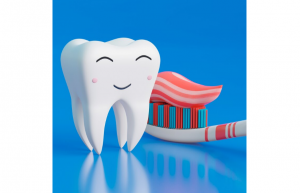Breaking a tooth in an accident can be a frightening and painful experience. Whether it happens during a fall, a car collision, or while playing sports, knowing how to act quickly and appropriately can significantly improve your oral health. Here's a step-by-step guide on what to do when you break a tooth in an accident.
Assess the Situation
The first step is to stay calm and assess the extent of the damage. Determine if the tooth is cracked, chipped, or completely broken. Then, check for any additional injuries, such as cuts to your lips, gums, or tongue. Addressing these immediate concerns should be your priority if there is severe bleeding or pain.
Once you've assessed the damage, rinse your mouth gently. Using warm water to remove any debris can help reduce the risk of infection and provide temporary relief from discomfort.
Recover the Tooth or Fragments
If the tooth is completely broken or knocked out, try to find the missing piece or fragments. When you find them, ensure you handle the tooth or fragments carefully, holding them by the crown (the top part) and avoiding the root to prevent further damage. Rinse them gently with water, but do not scrub or remove any tissue attached.
Protect the Tooth
If the tooth is chipped or even slightly cracked, you should cover any sharp edges with dental wax or sugarless gum to prevent cuts to your tongue or cheeks. You don't want to make the situation worse. If the tooth is completely knocked out, though, try to reposition it in the socket, but do not force it. If this isn't possible, store the tooth in milk, saline solution, or a tooth preservation kit until you can see a dentist.
Seek Immediate Dental Care
Contact your dentist or contact an emergency dental clinic as soon as possible if you can't get an appointment. Quick action is crucial, especially if the tooth is completely dislodged, as reimplantation is most successful within 30 minutes to an hour after the injury. Provide the dentist with any fragments or the whole tooth to increase the chances of repair or restoration.
Follow Up with Treatment
Once you've had the immediate assessment, your dentist will recommend appropriate treatment. This might include:
- Bonding or Filling: For minor chips or cracks, bonding or a filling can restore the tooth's appearance and functionality.
- Crown: A crown may be necessary for more significant damage to protect the remaining tooth structure. Crowns are usually the most popular way to fix teeth – you can learn more about this through GA Family Dental.
- Root Canal: If the pulp (inner tissue) of the tooth is exposed or just damaged, a root canal may be required to save the tooth.
- Dental Implant or Bridge: If the tooth cannot be saved, your dentist will talk you through what this means. They may recommend a dental implant or bridge to replace it.
Prevent Future Incidents
To minimize the risk of breaking a tooth in the future, consider wearing a mouthguard during sports or other high-risk activities. You should also avoid chewing hard objects like ice, pens, or hard candy. If you haven't been the best at looking after your oral health, make sure you change this. Maintaining good oral hygiene to keep your teeth strong and healthy. It could also be a good time to address grinding or clenching habits with your dentist's help.
Conclusion
Breaking a tooth in an accident can be a distressing experience, but acting quickly and following these steps can help protect your oral health and increase the chances of a successful repair. Always seek professional dental care as soon as possible to ensure the best outcome and prevent further complications. You can confidently handle this type of dental emergency by staying informed and prepared.






